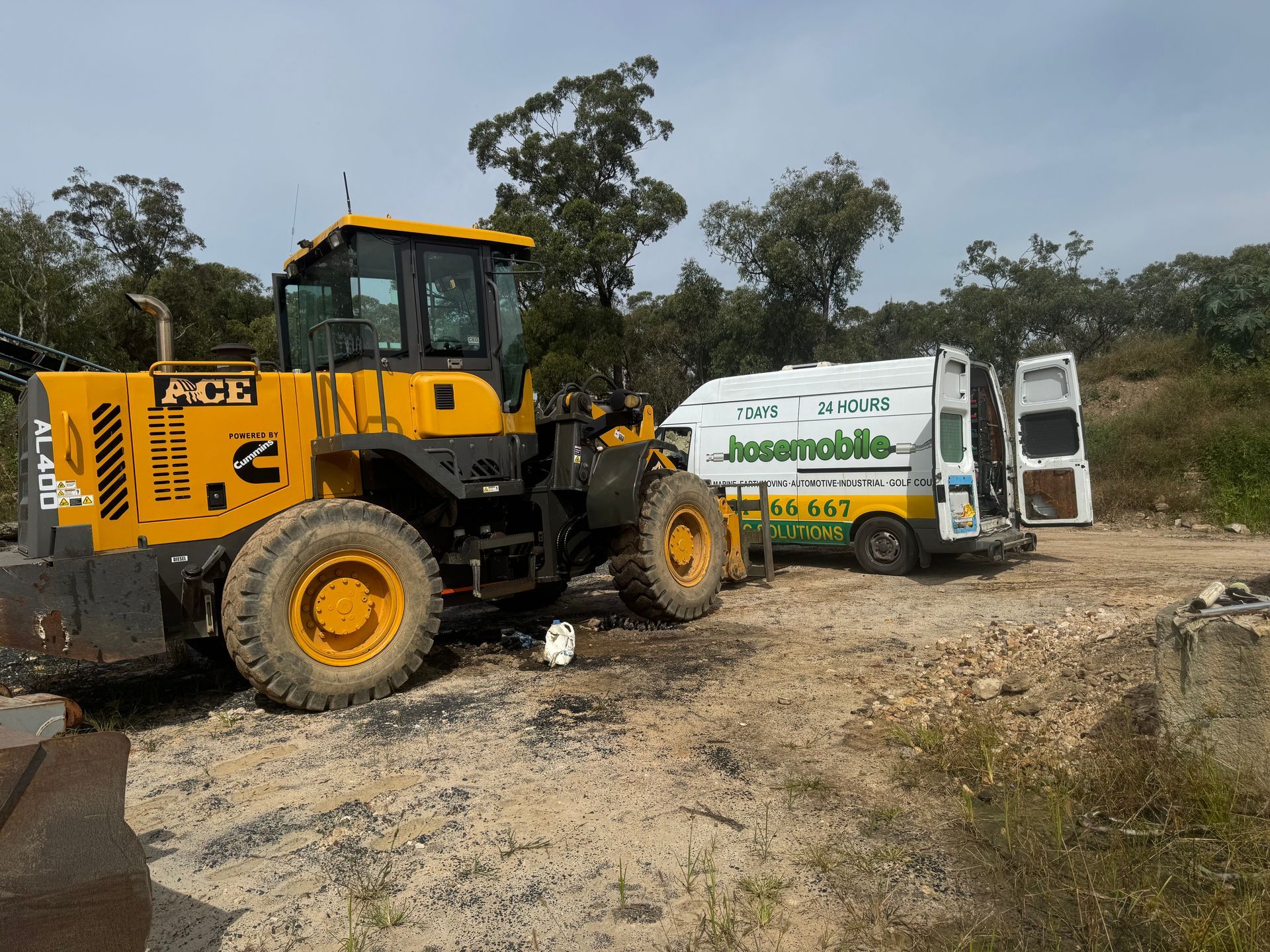Hosemobile
Fittings for Hydraulics in Way Way
- 24/7 Mobile Emergency Service
- Fully Equipped Mobile Workshop
- Extensive Repair & Maintenance Capabilities

Contact Us in Way Way
Thank you for contacting Hosemobile.
We will get back to you as soon as possible.
Oops, there was an error sending your message.
Please try again later.

Way Way Hydraulics
When heavy-duty equipment breaks down in a rural or remote area like Way Way, access to fast, on-site hydraulic service can make all the difference. For local operators who rely on machinery to power their farms, transport fleets, or construction projects, downtime can be costly and frustrating.
That’s where Hosemobile comes in. With over 15 years of hands-on experience, Hosemobile delivers professional, mobile hydraulic support tailored to the unique needs of regional clients. Based in Kariong and servicing the wider Central Coast, the team provides reliable on-site hose repairs, hydraulic system servicing, and the supply and installation of pressure-rated hydraulic fittings.
Each mobile unit is equipped with a wide variety of hoses, fittings, tools, and components, allowing most repairs to be completed during the first visit. Known for dependable service, fast response times, and a commitment to quality, Hosemobile has become a trusted choice for hydraulic support in Way Way.
For local, mobile service, contact 0401 766 667.
On-Site Service That Delivers
Way Way customers value practical, no-fuss support that gets machinery back to work fast—and that’s exactly what Hosemobile delivers. Whether it’s a burst hose on a tractor, a leaking fitting in a loader, or a complete system inspection before peak operating periods, Hosemobile’s mobile technicians handle it all on-site.
There’s no need to transport equipment off-property or wait days for parts to arrive. Each service vehicle is equipped with an extensive range of hydraulic hoses, fittings, and tools, allowing most issues to be resolved during the first visit.
The team takes the time to assess each machine's specific needs, matching components to the correct pressure rating, temperature range, and usage demands. Jobs are completed to meet industry safety and performance standards.
For operators in Way Way, Hosemobile offers more than just convenience—they provide reliable, experienced service tailored to local conditions. It’s responsive hydraulic support that shows up on time, with everything needed to get the job done right.

Frequently Asked Questions
What types of hydraulic fittings are most commonly used?
The most commonly used hydraulic fittings include JIC (Joint Industry Council), NPT (National Pipe Thread), BSP (British Standard Pipe), ORFS (O-Ring Face Seal), and flange fittings. Each type has different sealing characteristics, thread patterns, and pressure ratings. JIC fittings are popular for their metal-to-metal seal, which is ideal for high-pressure environments. ORFS fittings are often used where vibration is a concern because their O-ring provides a more secure, leak-free connection. Choosing the right fitting depends on the equipment, fluid type, pressure, and specific connection needs.
How can I tell if a hydraulic fitting needs replacing?
Signs that a hydraulic fitting needs replacing include fluid leaks around the connection, visible cracks or corrosion, loose threads, or changes in system pressure. Fittings can degrade over time due to vibration, exposure to moisture, or incorrect installation. Leaks can appear slow at first but may develop into more serious issues that affect system performance and safety. Regular inspections during routine maintenance help catch failing fittings early and avoid unplanned downtime.
Can different types of hydraulic fittings be mixed together?
Mixing different types of hydraulic fittings—especially those with varying thread styles or sealing mechanisms—is not recommended. Combining fittings from different standards (e.g., NPT with BSP) can lead to leaks, cross-threading, or failure under pressure. Even if the threads seem to fit, small differences in size or taper can compromise the seal. Always use fittings that are designed to work together, ideally specified by the equipment manufacturer or verified by a hydraulic technician.




